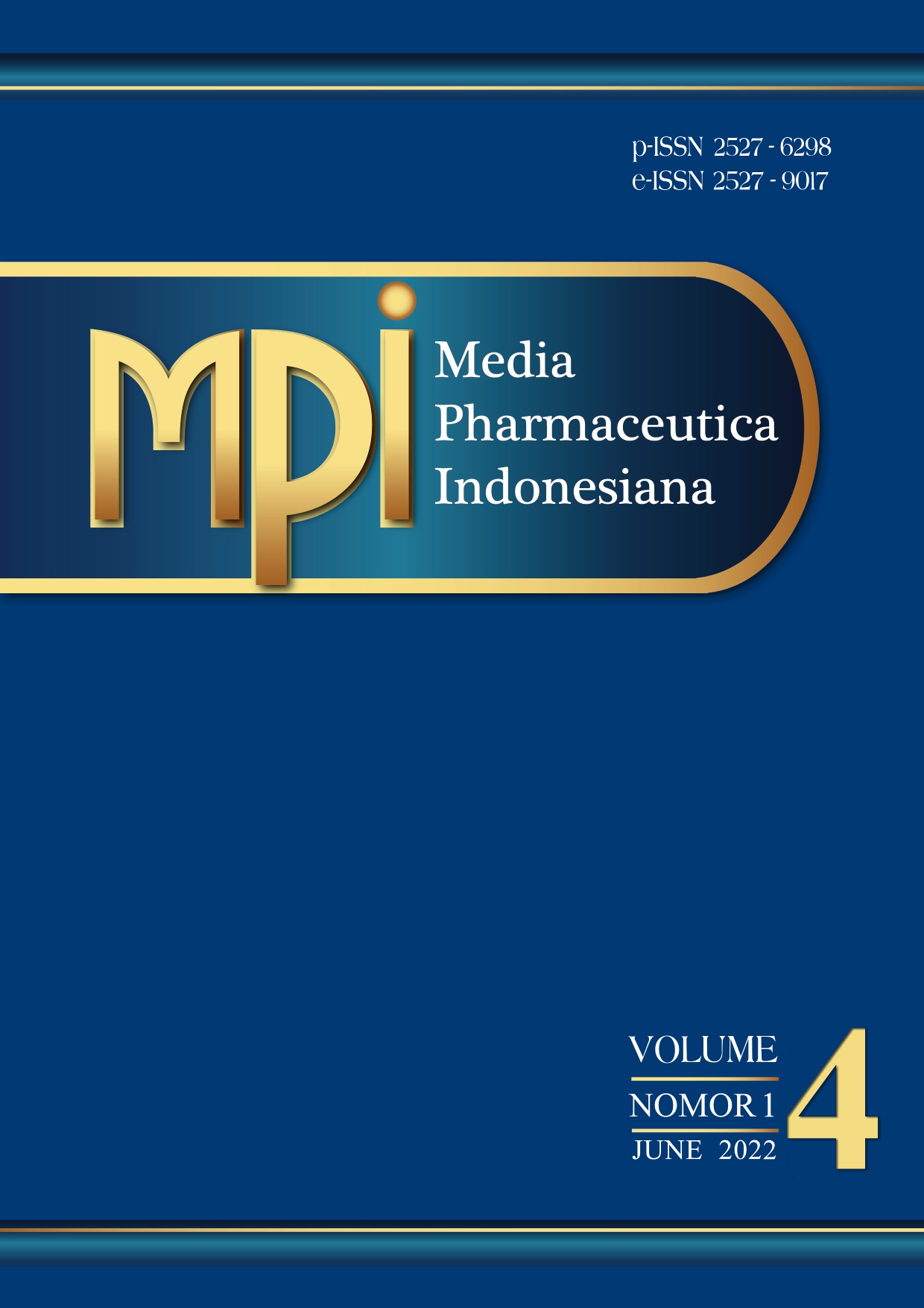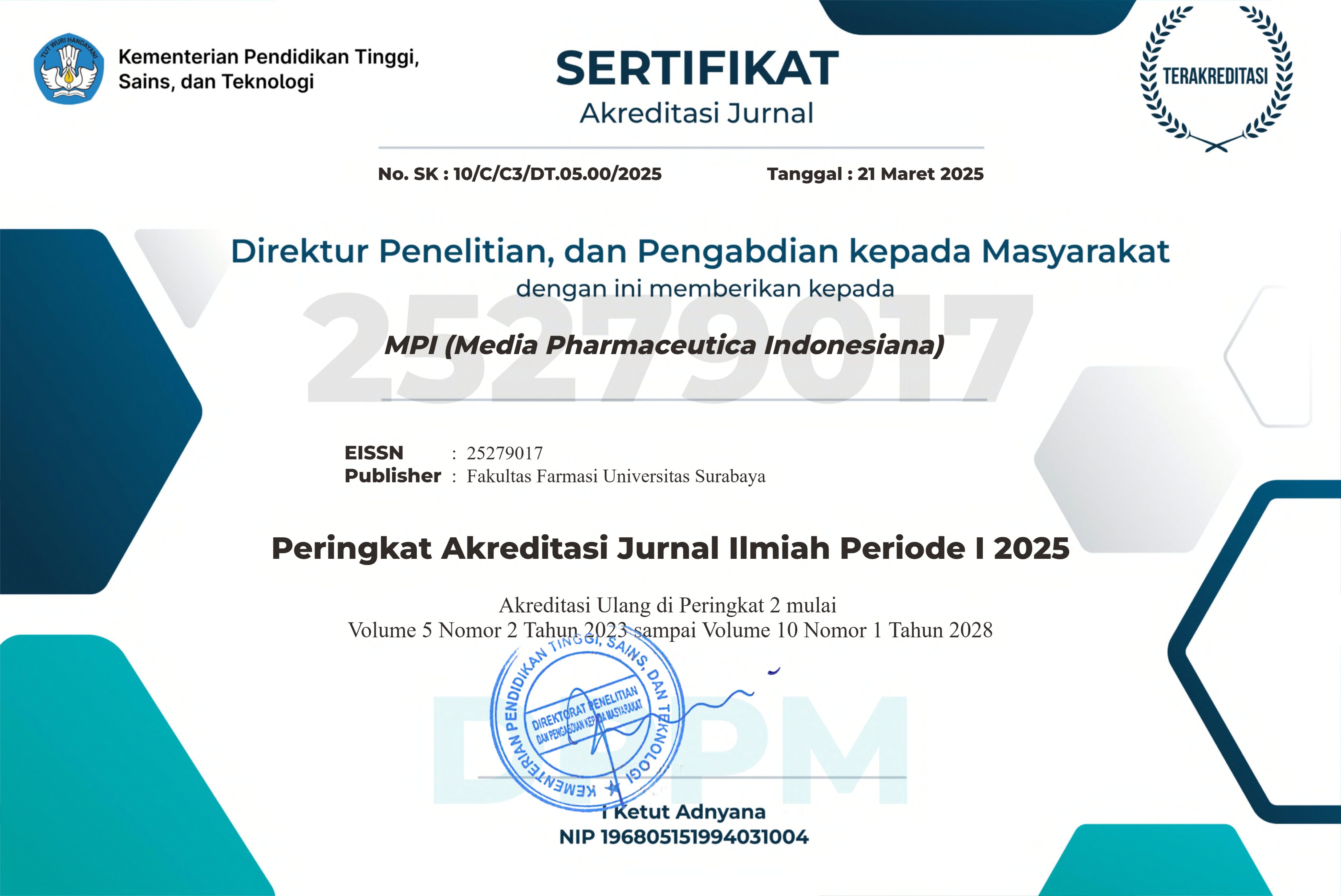Mini Review: Quality Control Study of Crude Drug of Justicia gendarussa Burm. f. Leaves as Male Contraceptive
 Abstract Views:
519 times
Abstract Views:
519 times
 PDF Downloads:
0 times
PDF Downloads:
0 times
Abstract
Justicia gendarussa Burm. f. (Gendarussa) leaves contain gendarusin A, which is a potential antifertility agent. Preclinical researches (in vitro, in vivo, and toxicity) and clinical trials have been carried out proving that Gendarussa leaves are safe to be used as a male contraceptive. Quality control of medicine must be carried out from the beginning when selecting crude drugs until the production process. Quality control of the crude drug is needed to maintain the quality, safety, and efficacy of its crude drug. That standardization has been done in Kediri, Mojokerto, and Ponorogo. The research output data used were specific and nonspecific parameters (macroscopic and microscopic assay, determination of ash content, compound levels, etc.). The quality of crude drugs is different in each region. Crude drug from Mojokerto is better than crude drug from Kediri and Ponorogo. This is influenced by environmental difference factors on how plants grow. This review describes the differences in the quality control results of crude drug of Gendarussa from several areas. Hence, in the future, the quality of this plant can be guaranteed to be used as a contraceptive drug.
Downloads

This work is licensed under a Creative Commons Attribution-ShareAlike 4.0 International License.
Articles published in MPI are licensed under a Creative Commons Attribution-ShareAlike 4.0 International (CC BY-SA) license. You are free to copy, transform, or redistribute articles for any lawful purpose in any medium, provided you give appropriate credit to the original author(s) and MPI, link to the license, indicate if changes were made, and redistribute any derivative work under the same license.
Copyright on articles is retained by the respective author(s), without restrictions. A non-exclusive license is granted to MPI to publish the article and identify itself as its original publisher, along with the commercial right to include the article in a hardcopy issue for sale to libraries and individuals.
By publishing in MPI, authors grant any third party the right to use their article to the extent provided by the CC BY-SA license.

 DOI:
DOI:










